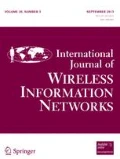Video capsule endoscopy (VCE) is an emerging diagnosis technique that enables medical professionals to monitor inside the body. Specifically, it facilitates monitoring of the portions of the gastrointestinal (GI) tract, such as the small intestine, that is unreachable by conventional endoscopy techniques.
Current VCE systems are passive tools (i.e. they cannot be remotely controlled and naturally pass through the GI tract by normal peristalsis) that are mainly used for diagnostic purposes only. The patient swallows a pill-sized capsule containing a camera and the capsule travels through the gastrointestinal (GI) tract by normal muscle movements. The camera captures images and the capsule transmits them wirelessly to an external receiver. Although VCE systems are currently used in clinical settings, there are some issues that need to be resolved in order to take full advantage of this technique. The first issue is the localization of the endoscopy capsule inside the GI tract. This is a significant problem because if the images received from the endoscopy capsule convey the presence of an abnormal condition (such as a lesion or tumor), the existing systems cannot localize the location of the abnormality within the GI tract. This makes subsequent surgical interventions considerably more difficult and time consuming. Localization of a passive endoscopy capsule within the GI tract is, therefore, a problem that needs to be addressed. In addition, the current VCE systems mostly use narrowband transmission techniques in the MICS band (402-405 MHz) and can only transmit images at a limited resolution. They also have very limited energy storage. In order to facilitate image transmission at a higher resolution, power-efficient narrowband and possibly wideband transmission techniques (such as ultra-wide band) need to be investigated.
Recently, there has also been a lot of interest and R&D work devoted to developing active VCE systems (also known as robotic endoscopes) that can be maneuvered within the GI tract. The problem of capsule/robot localization is even more important in this case. In fact, since the location of the capsule is required to be known in order to provide appropriate feedback to the actuation system, the capsule needs to be localized much faster and with higher precision in this case. In some cases (such as magnetic actuation and localization), it is possible that the actuation and localization systems interfere with each other, causing severe performance degradation, thus, the coexistence issues of localization and actuation systems should be carefully studied. In addition, in order to develop active VCE systems, wireless power transfer to capsule/micro-robots with energy harvesting capability needs to be investigated that provide sufficient energy for the actuators within these devices.
Several papers from the 10th IEEE International Symposium on Medical Information and Communication Technology—2016 (ISMICT-2016), held at the Worcester Polytechnic Institute touched on these areas of video capsule endoscopy. In this special issue, we are pleased to present extended versions of three of these papers.
Analysis of fundamental performance limits for VCE localization is quite important, as it can help guide the design and performance optimization of VCE localization systems The first paper, titled “Fundamental Limits of TOA/DOA and Inertial Measurement Unit-based Wireless Capsule Endoscopy Hybrid Localization” by Seongah Jeong, Joonhyuk Kang, Kaveh Pahlavan and Vahid Tarokh focuses on such an analysis. Two different types of RF measurements (time and angle of arrival) are used together with Inertial Measurement Unit (IMU) measurements in an Extended Kalman Filter (EKF). Posterior Cramer Rao Bound (PCRB) results for the proposed technique are presented.
An important issue for localization of a VCE is that time-consuming pre-measurements are needed. To avoid such pre-measurements, localization techniques based on electromagnetic (EM) imaging techniques could be an alternative. However, localization techniques based on EM imaging techniques could be prohibitive from a computational complexity perspective, due to the high resolution requirements. The second paper, “A Three-Dimensional EM-Based Implant Device Localization Method Improved by Genetic Algorithm”, by Taiki Iida, Jianqing Wang and Daisuke Anzai, focuses on this problem by using a Genetic Algorithm (GA) together with EM-based techniques to reduce the computational complexity. The performance of the proposed technique is evaluated through computer simulations and compared with conventional RF-based localization methods.
Besides RF-based techniques, another very important method for VCE localization involves magnetic sensing, where a permanent magnet is integrated into the endoscopy capsule and magnetic sensors outside the body help localize the capsule by measuring the strength of the magnetic field around it. The third paper by Ilknur Umay and Baris Fidan, titled “Adaptive Wireless Biomedical Capsule Tracking Based on Magnetic Sensing” proposes a hybrid localization system based on both magnetic sensing and RF signal measurements for accurate estimation of position and orientation. The proposed technique is also integrated with an adaptive motion control law to construct an adaptive capsule tracking controller.
In closing, we would like to thank the authors for their high-quality contributions, and Prof. Kaveh Pahlavan both for proposing this special issue and giving us the opportunity to undertake this rewarding project.
Author information
Authors and Affiliations
Corresponding author
Additional information
The original version of this article was revised: The title of the editorial has been updated in this version.
An erratum to this article is available at http://dx.doi.org/10.1007/s10776-017-0354-3.
Rights and permissions
About this article
Cite this article
Kanaan, M., Farhadi, H. Advances in Wireless Video Capsule Endoscopy. Int J Wireless Inf Networks 24, 166–167 (2017). https://doi.org/10.1007/s10776-017-0350-7
Published:
Issue Date:
DOI: https://doi.org/10.1007/s10776-017-0350-7

